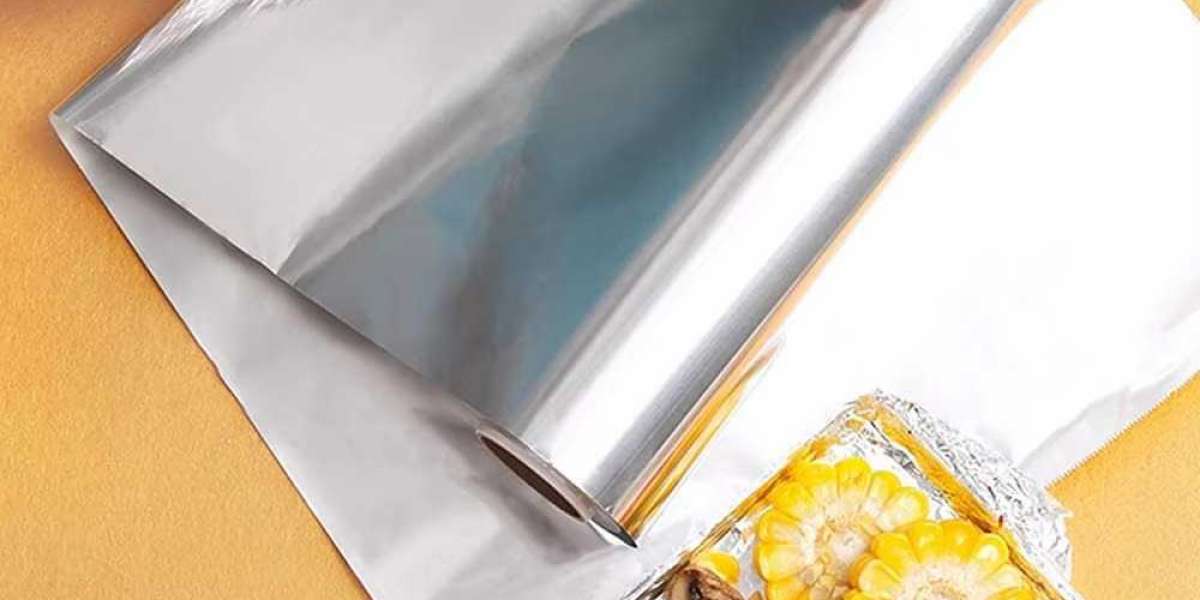Non-stick aluminum foil has become a kitchen staple for its convenience in cooking and cleanup. But with growing concerns about chemical coatings and high-heat safety, many ask: Is non-stick aluminum foil safe? This guide dives into the science, potential risks, and expert recommendations to help you make informed decisions in 2023.
What Is Non-Stick Aluminum Foil?
Non-stick aluminum foil is regular aluminum foil coated with a thin layer of PTFE (polytetrafluoroethylene) or silicone. This coating prevents food from sticking, making it popular for grilling, baking, and wrapping greasy or sticky foods.
Key features:
- Heat resistance (up to 500°F/260°C for PTFE coatings).
- Reduced need for cooking oils.
- Easy release of baked goods or meats.
Is Non-Stick Aluminum Foil Safe? 3 Critical Factors
1. Chemical Safety of PTFE Coatings
Most non-stick foils use PTFE, the same chemical in traditional non-stick pans. While PTFE itself is FDA-approved and inert at low temperatures, overheating it (above 500°F/260°C) can release toxic fumes. These fumes may cause polymer fume fever (temporary flu-like symptoms) in humans and are harmful to birds.
Expert take:
- The FDA considers PTFE coatings safe for food contact when used as directed.
- Avoid using non-stick foil under broilers or at ultra-high temperatures.
2. Aluminum Leaching Concerns
Aluminum exposure from foil is generally minimal but can increase when cooking acidic or salty foods (e.g., tomatoes, citrus, or marinades). High aluminum intake has been loosely linked to health issues like neurotoxicity, though the WHO states typical dietary exposure is safe.
Minimize risk:
- Avoid using non-stick foil with acidic foods.
- Don’t reuse foil for multiple cooking sessions.
3. Environmental and Long-Term Impact
PTFE is a PFAS (per- and polyfluoroalkyl substance), a “forever chemical” linked to environmental persistence and potential health risks. While non-stick foil coatings are PFAS-free in some brands, check labels for certifications like PFOA-free or GreenPan Safe Coat.
Non-Stick Foil vs. Regular Aluminum Foil: Safety Comparison
| Factor | Non-Stick Foil | Regular Foil |
|---|---|---|
| Coating | PTFE or silicone | None |
| Max Safe Temperature | 500°F (260°C) | 600°F (315°C) |
| Food Stickiness | Reduced | High |
| Aluminum Leaching | Similar to regular foil | Same risk with acidic foods |
Safe Use Tips for Non-Stick Aluminum Foil
- Stay Below 500°F: Never use under broilers, in air fryers, or on open flames.
- Avoid Metal Utensils: Scratches can damage the coating and release particles.
- Skip Acidic Foods: Use parchment paper or uncoated foil for citrus, vinegar, or tomato-based dishes.
- Dispose of Damaged Foil: Discard if the coating peels or flakes.
Eco-Friendly Alternatives to Non-Stick Foil
If you’re concerned about PTFE or PFAS:
- Silicone Baking Mats: Reusable, heat-resistant up to 480°F (250°C).
- Unbleached Parchment Paper: Compostable and non-stick.
- Bare Aluminum Foil: Use with oils or fats to prevent sticking.
FAQ: Is Non-Stick Aluminum Foil Safe?
Q: Can non-stick aluminum foil cause cancer?
A: No conclusive evidence links PTFE-coated foil to cancer when used properly. Overheating may release fumes, but these are short-term irritants, not carcinogens.
Q: Is it safe to line my oven with non-stick foil?
A: No—oven liners can block airflow and overheat, damaging the coating.
Q: Are there PFAS-free non-stick foil brands?
A: Yes! Look for brands like If You Care or Reynolds Wrap Non-Stick (PFOA-free).
Q: Can I recycle non-stick aluminum foil?
A: Most recycling centers reject coated foil. Check local guidelines or switch to reusable options.




